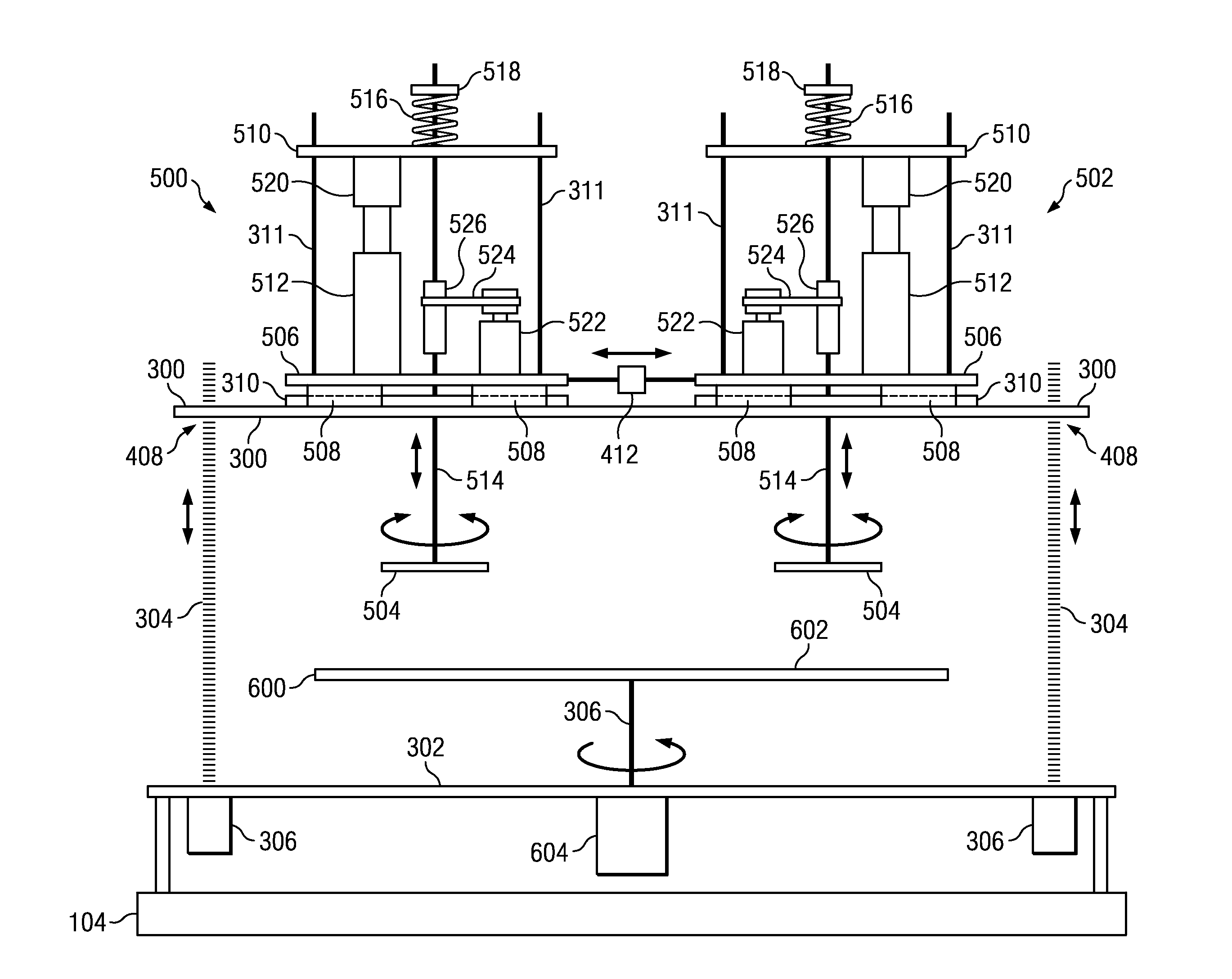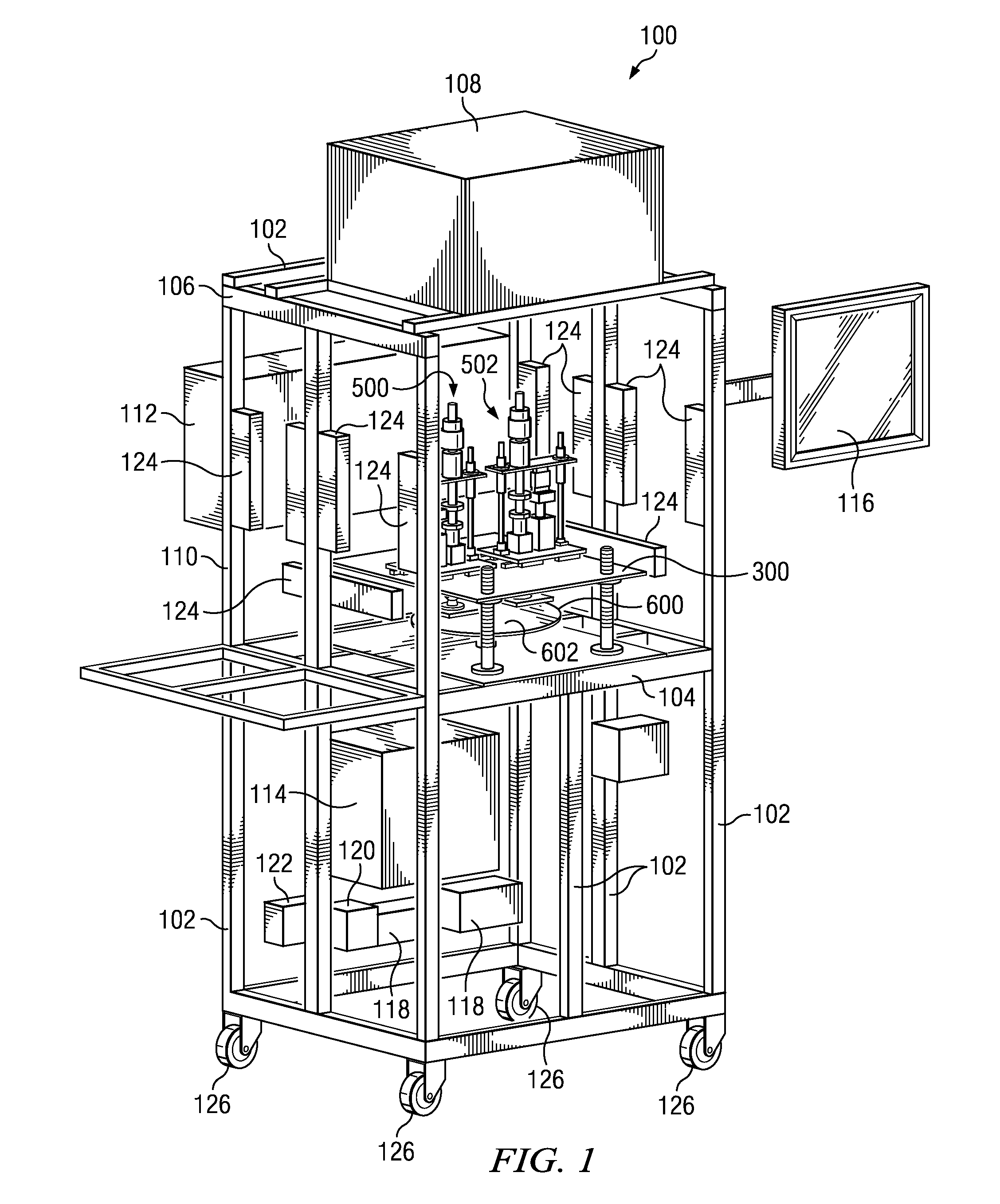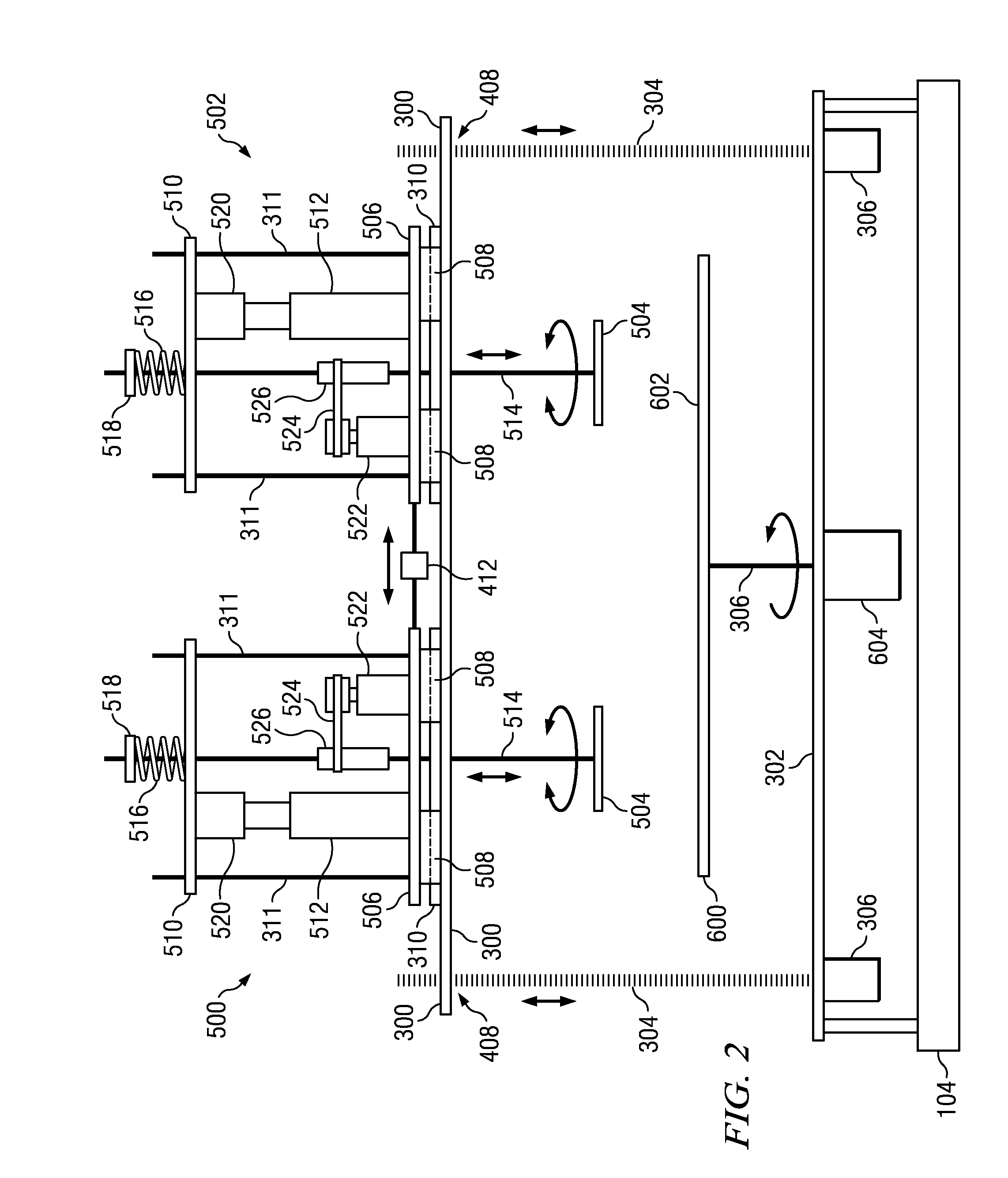Automated chemical polishing system adapted for soft semiconductor materials
a technology of automatic polishing and semiconductor materials, applied in the direction of grinding machine components, manufacturing tools, lapping machines, etc., can solve the problems of inability to withstand excessive downward pressure of the sort exerted in conventional polishing processes, less precision, and more fragile semiconductor materials, etc., to achieve smooth variation of downward pressure and enhanced precision
- Summary
- Abstract
- Description
- Claims
- Application Information
AI Technical Summary
Benefits of technology
Problems solved by technology
Method used
Image
Examples
Embodiment Construction
[0021]A polishing machine according to the invention, as installed in a supporting structural framework 100, is shown in FIG. 1. The frame 100 may be conveniently assembled from metal members 102 which may be made of steel, aluminum or similarly strong structural material. The frame 100 provides the structural support for the various machine components, such as the jig deck 300, polishing jigs 500, 502 and the polishing platen 600. The frame 100 includes a horizontal jig deck support grid 104 that, in the illustrated embodiment, is positioned approximately in the center of the frame 100. The jig deck support grid 104 provides structural support for the jig deck 300 (via a base and support shafts, later described) and indirectly the jigs 500, 502 and the polishing platen 600, and related equipment.
[0022]The main polishing machine components 300, 500, 502 and 600 are housed in a space extending from the support grid 104 up to a ceiling 106 formed of further structural members 102. Sin...
PUM
 Login to View More
Login to View More Abstract
Description
Claims
Application Information
 Login to View More
Login to View More - R&D
- Intellectual Property
- Life Sciences
- Materials
- Tech Scout
- Unparalleled Data Quality
- Higher Quality Content
- 60% Fewer Hallucinations
Browse by: Latest US Patents, China's latest patents, Technical Efficacy Thesaurus, Application Domain, Technology Topic, Popular Technical Reports.
© 2025 PatSnap. All rights reserved.Legal|Privacy policy|Modern Slavery Act Transparency Statement|Sitemap|About US| Contact US: help@patsnap.com



